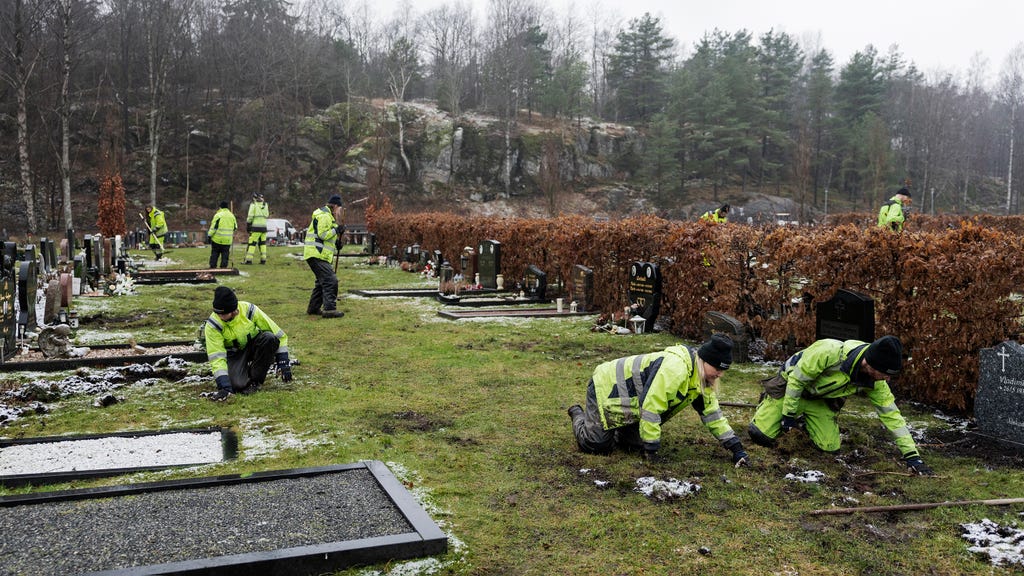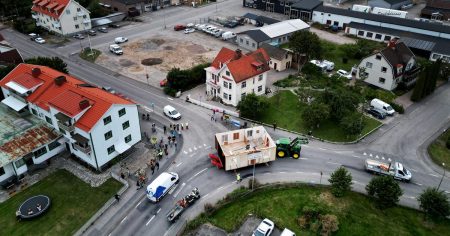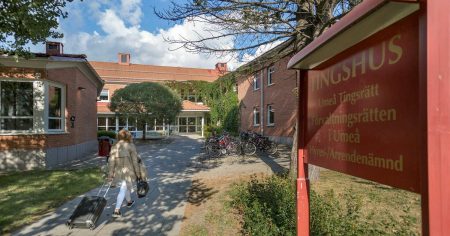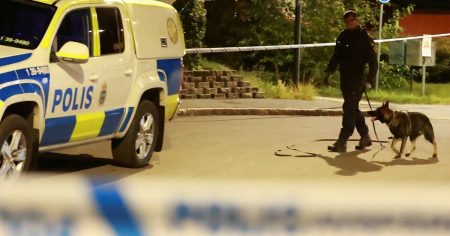The serenity of Kviberg Cemetery in Gothenburg, Sweden, has been shattered by an unusual band of vandals: wild boars. The meticulously manicured lawns, adorned with carefully placed grave markers and tributes, have been transformed into a landscape of upturned earth and disarray. A plaster angel lies overturned in the gravel, grave lanterns are scattered, and a team of cemetery workers, clad in neon yellow, try to piece together the scene of the previous night’s chaos. The damage is extensive, with rows upon rows of graves disturbed, the verdant green grass replaced with patches of exposed brown earth.
The workers are familiar with one particular boar, nicknamed ”Sven,” a seemingly tame individual often seen wandering the grounds alone, even playfully interacting with grave decorations. However, the scale of this latest devastation suggests a larger group at work. Lotta Torvaldsson, the team leader, directs her crew as they methodically work to restore order. They carefully replace the dislodged turf, reposition decorations, and attempt to recreate the arrangements as they believe the families intended. Their efforts are driven by a sense of urgency, as they know that prompt action is crucial for the grass to recover properly.
One visitor, Aurora Carolina Senciuc, arrives early in the morning, having heard of the destruction. Relieved to find her mother’s grave untouched, she observes the workers’ efforts with a mixture of gratitude and sadness. Her mother’s grave, covered in gravel and bordered by stone, has been spared, unlike the more vulnerable grassy plots. The workers believe the boars are after the roots, a readily available food source beneath the surface. The boars, nocturnal by nature, typically vanish by mid-morning, allowing the workers to begin their repairs. However, weekends provide an uninterrupted period for the animals to forage, leading to more extensive damage.
Maja Nåbo, one of the workers, points out a particularly distressing sight: a grave completely excavated along its length, a 15-cm deep trench stretching almost two meters from the headstone. The sight evokes a shared sense of dismay among the workers. The wild boars’ persistent presence has become a recurring problem since the summer months, with the animals seemingly working their way systematically through the cemetery grounds. Despite the workers’ efforts to restore the grounds, they know the boars will return under the cover of darkness, continuing their disruptive foraging elsewhere within the vast cemetery.
The local municipality, recognizing the severity of the issue, has enlisted the help of a hunting team to cull the troublesome boars. However, the expansive and largely unfenced nature of the cemetery, with its bordering woodland, makes tracking and controlling the boar population a challenging task. The hunters have so far been unsuccessful in locating ”Sven” and his accomplices. The cemetery workers find themselves in a continuous cycle of repair and restoration, knowing that their efforts are only a temporary reprieve before the boars return to continue their destructive foraging.
The incident highlights the complex intersection of urban development and wildlife encroachment. The sprawling Kviberg Cemetery, situated near forested areas, provides an attractive habitat for wild boars seeking food and shelter. The lack of effective barriers allows the animals easy access to the grounds, creating an ongoing conflict between the needs of the wildlife and the sanctity of the cemetery. The workers, caught in the middle, strive to maintain the dignity of the cemetery while grappling with the persistent presence of these unwelcome visitors. Their dedicated work is a testament to their respect for the deceased and their commitment to maintaining the tranquility of the cemetery, despite the ongoing challenges.














